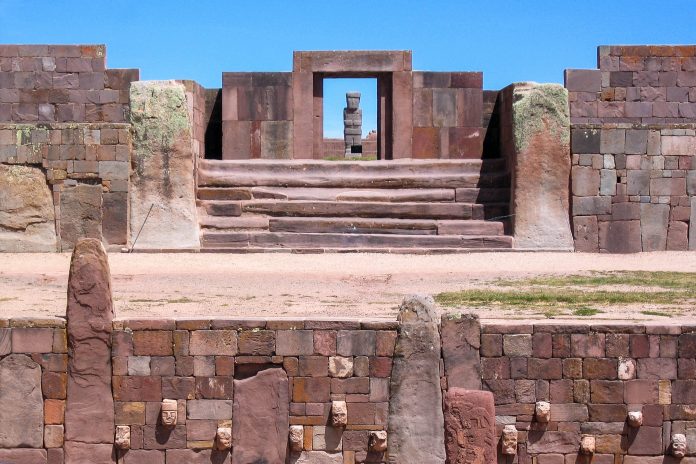Die Ruinenstätte von Tiwanaku liegt im westlichen Bolivien an der Grenze zu Peru. Neben Machu Picchu in Peru ist Tiwanaku die bedeutendste Stätte Südamerikas, die noch vor der Landung Kolumbus’ errichtet wurde und nicht nur für kulturinteressierte Bolivien-Reisende ein absolutes Muss.
Die Ruinenstätte von Tiwanaku (auch Tiahuanaco genannt) liegt etwa 70 Kilometer der bolivianischen Hauptstadt La Paz entfernt nahe der Stadt Tiawanacu im westlichen Bolivien an der Grenze zu Peru. Auf einer Höhe von 4.000 Metern über dem Meer thront die geheimnisumwitterte historische Stadt in den bolivianischen Anden. Der faszinierende Ort zählt zu unseren Top 10 Sehenswürdigkeiten von Bolivien.
Tiwanaku bezeichnet sowohl eine Ruinenstätte als auch eine südamerikanische Kultur und ist die wichtigste Ausgrabungsstätte Boliviens. Neben Machu Picchu in Peru ist Tiwanaku die bedeutendste Stätte Südamerikas, die noch vor der Landung Kolumbus‘ errichtet wurde. Seit dem Jahr 2000 zählt Tiwanaku zum Weltkulturerbe der UNESCO.
Inhaltsverzeichnis
BILDER: Ruinenstätte Tiwanaku
Fotogalerie: Ruinenstätte Tiwanaku
Machtzentrum der Aymaras
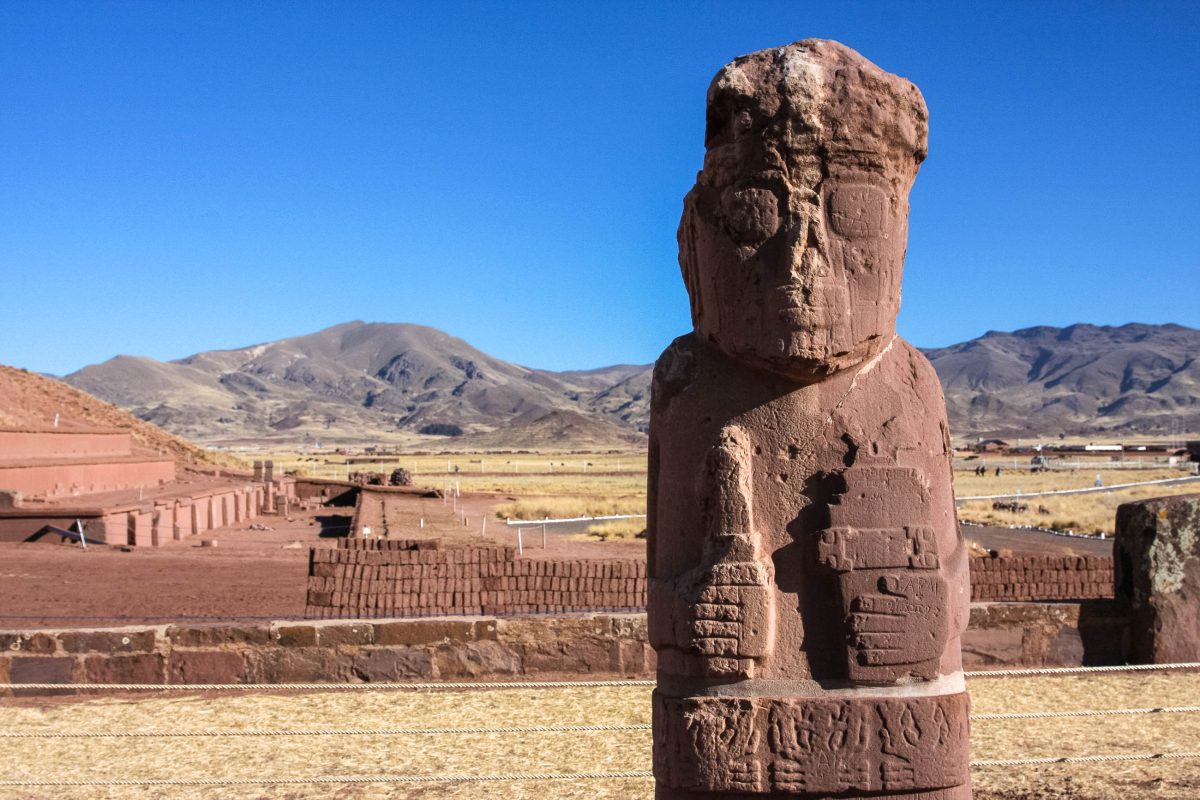
Tiwanaku bedeutet wörtlich übersetzt etwa „Setz dich hin, kleines Lama“. Tiwanaku wurde vor etwa 3.000 Jahren, um 1.500 vor Christus errichtet und fungierte ab etwa 300 vor Christus als Verwaltungs- und spirituelles Zentrum der Aymara-Kultur.
Seinen kulturellen Höhepunkt erreichte Tiwanaku von 600 bis 900 nach Christus, als sein Einfluss bis zur Atacama-Wüste in Chile und ins heutige Argentinien reichte. Gegen Ende des ersten Jahrtausends wurde der florierenden Stadt eine Dürreperiode zum Verhängnis, die trotz ausgeklügelter Bewässerungsanlagen große Teile der Ernte vernichtete.
Tiwanaku wurde für viele Jahre verlassen und erlangte aufgrund der Macht der Inkas und anderer Völker über die Aymaras nie wieder zu seiner früheren Bedeutung.
Übernahme durch die Inkas, Zerstörung durch die Spanier
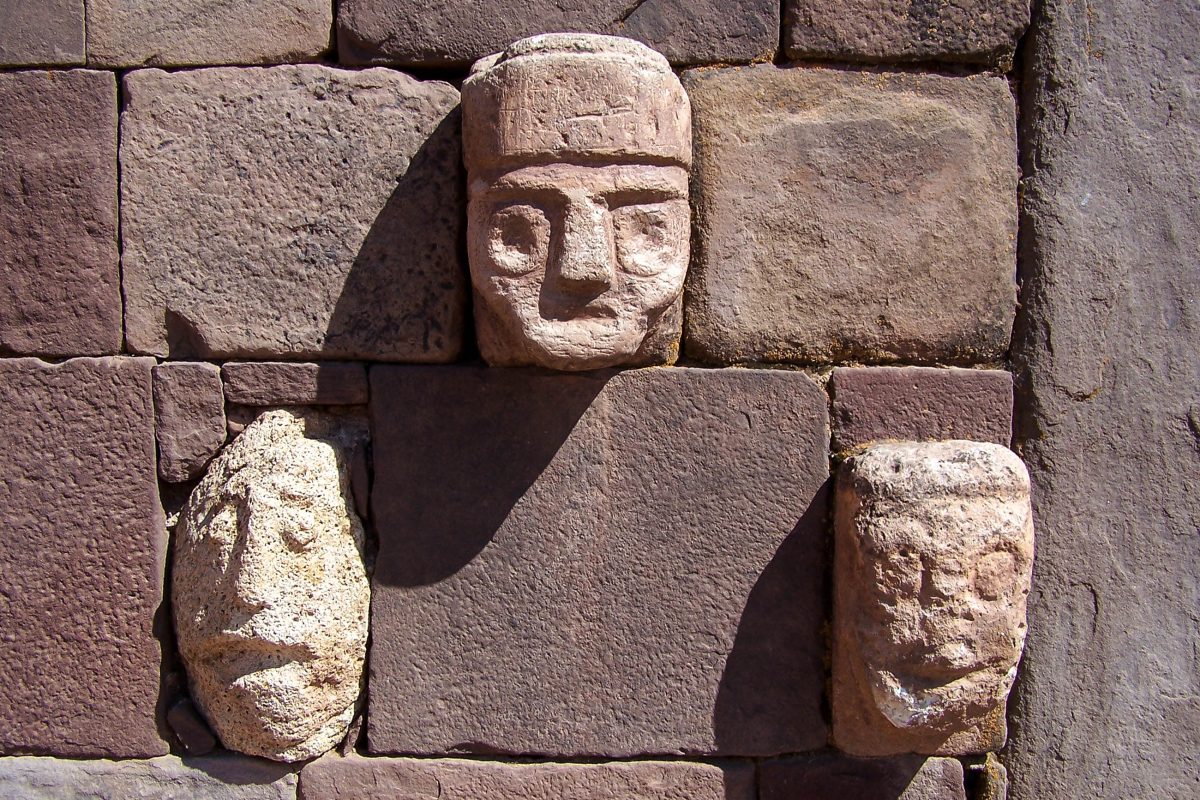
Als Tiwanaku von den Inkas erreicht wurde, war die Stadt bereits etwa 500 Jahre verlassen. Die Inkas errichteten neben den Aymara-Ruinen ihre eigenen Bauwerke und ernannten Tiwanaku sogar in einigen ihrer Mythen zur Geburtsstätte der Menschheit. So behielt Tiwanaku seinen spirituellen und religiösen Charakter bis zum Eintreffen der Spanier.
Die Konquistadoren nutzten die Ruinenstätte als Lieferant für Baumaterial und zerstörten vieles, was von der historischen Stadt noch übrig war. Die Ausgrabung und Erforschung der Stadt wurde vom österreichischen Ingenieur Arthur Posnansky angeführt.
Heute ist von Tiwanaku erst etwa 1 Prozent der 10 Quadratkilometer großen Gesamtfläche freigelegt, mehrere US-amerikanische Universitäten und bolivianische Institutionen arbeiten an der archäologischen Erforschung von Tiwanaku.
Besuch von Tiwanaku
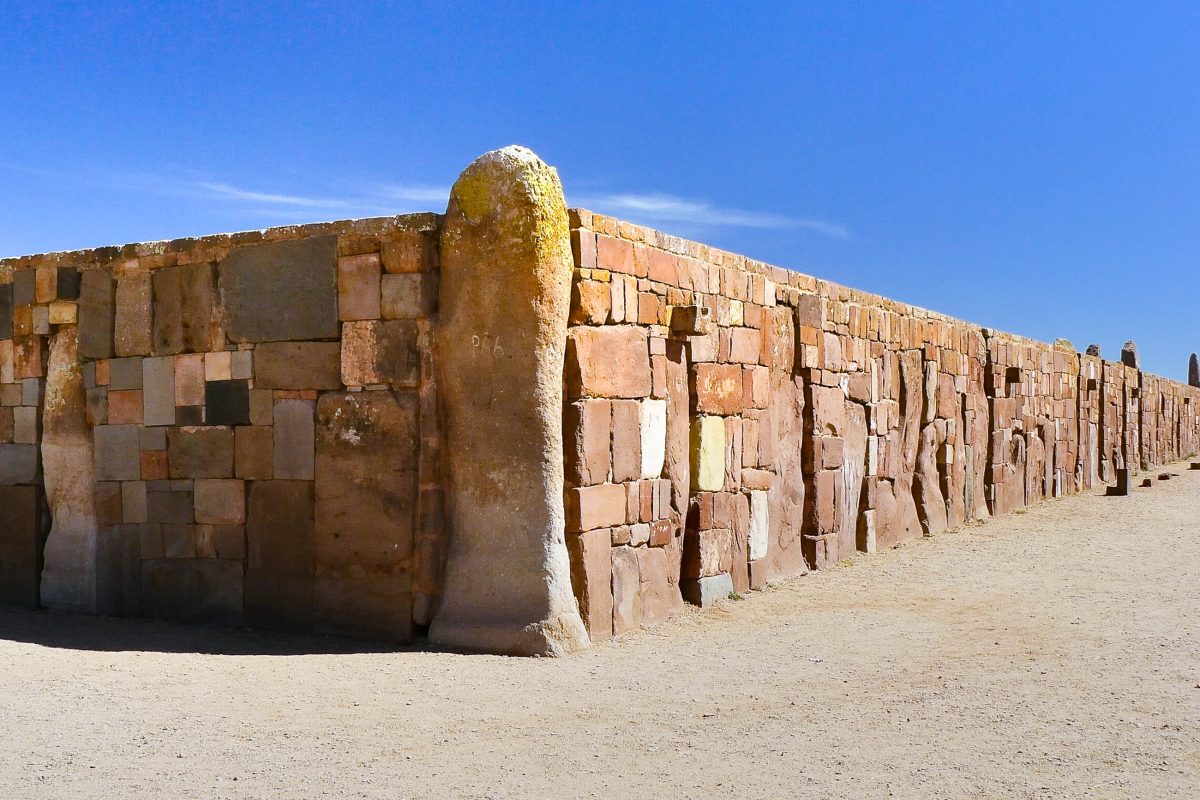
Tiwanaku ist nicht nur für Kulturinteressierte in Bolivien ein absolutes Muss. Zu sehen gibt es Mauern, Treppen und Gebäudereste der Jahrtausende alten Stadt. Das besondere daran ist, dass die über 100 Tonnen schweren Blöcke für die meisterhaft gefertigten Steinmetzarbeiten aus einem Steinbruch in über 20km Entfernung herangeschafft wurden. Wie dies bewerkstelligt wurde, ist nach wie vor ein Rätsel, denn in Tiwanaku war das Rad noch unbekannt.
Auch die damalige Bearbeitung von Andesit und Diorit, die zu den härtesten Gesteinen zählen, gibt Forschern noch heute Rätsel auf. Vom Akapana, einem kleinen Hügel auf der Tempelanlage, lässt sich das gesamte Areal gut überblicken.
Er dient jedoch nicht nur dem Ausblick, sondern hält noch ein wissenschaftliches Rätsel bereit. Hält man einen Kompass über einen der Steine auf diesem Hügel, beginnt die Nadel wie verrückt zu kreisen – warum dies so ist, können unsere Wissenschaftler bis heute nicht erklären.
Das berühmte Sonnentor von Tiwanaku
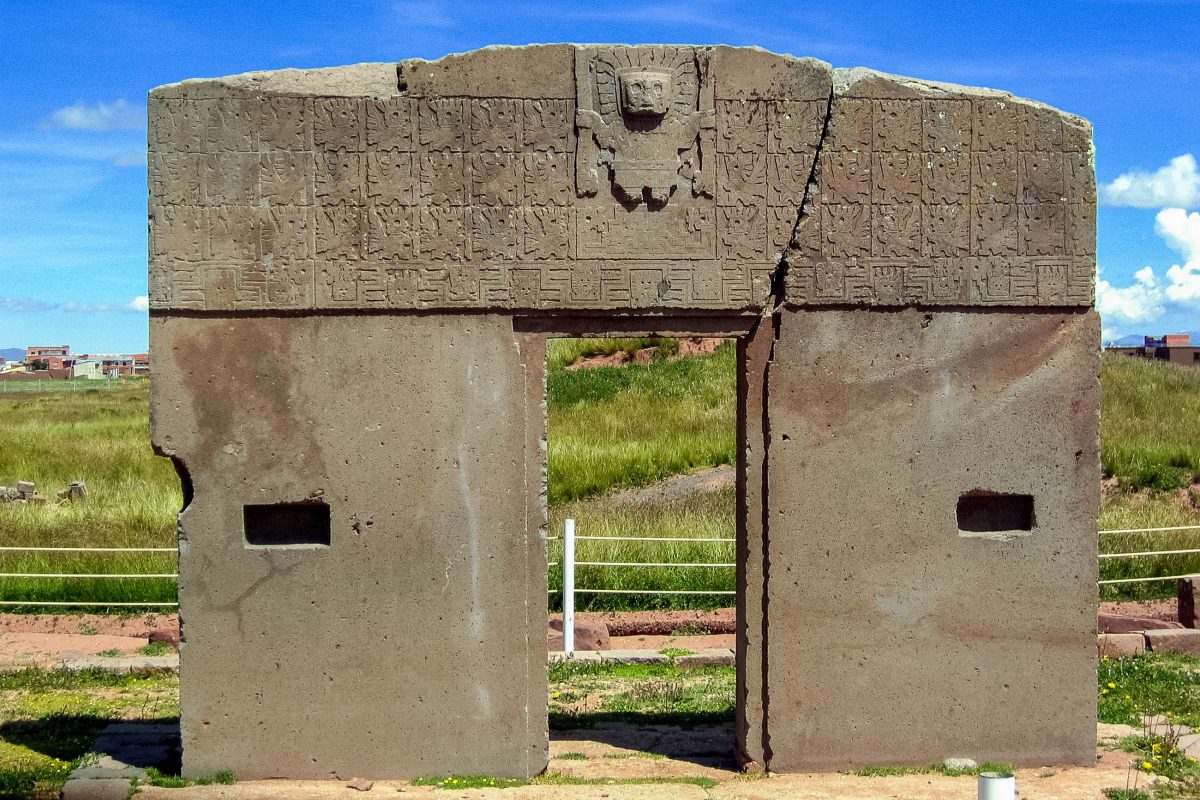
Die berühmteste Sehenswürdigkeit Tiwanakus ist das Sonnentor, auch Intipunku genannt. Das etwa drei Meter lange und knapp vier Meter hohe Tor aus vulkanischem Gestein erinnert in seiner Form an einen Triumphbogen und wurde aus nur einem Andesitblock herausgemeißelt.
Vermutlich aufgrund eines Erdbebens zerbrach es einst in zwei Teile, wurde jedoch Anfang des 20. Jahrhunderts wieder zusammengefügt und aufgerichtet. Am höchsten Punkt des Tores befindet sich das maskenhafte Gesicht des Schöpfergottes Wiracocha, die rechts und links von zwei gemeißelten Schlangenzeptern flankiert wird. Das Sonnentor diente außerdem der Errechnung von astronomischen Daten. So war den Tiwanaku bereits bekannt, dass das Jahr exakt 365,25 Tage hatte.
Fundstücke aus Tiwanaku sind in einem kleinen Museum ausgestellt, welches zu den Gefäßen, Figuren und Schmuck aus Ton und Keramik auch englischsprachige Erklärungen zur Verfügung stellt.
Einige hundert Meter entfernt finden sich die meisterhaft bearbeiteten Monolithe des Ruinenfeldes Puma Punku, Teile eines unvollendeten Gebäudes der Aymara. Der Tempel von Puma Punku zählt zu den Meisterwerken präkolumbischer Architektur in Bolivien.
Tipp: Bei einem Besuch Tiwanakus sollte ein kompetenter Führer dabei sein, der die etwas undurchsichtige Kultur Tiwanakus erklären kann. Die steinernen Ruinen werden mit Hilfe der interessanten Hintergrundinformationen noch um einiges sehenswerter.

